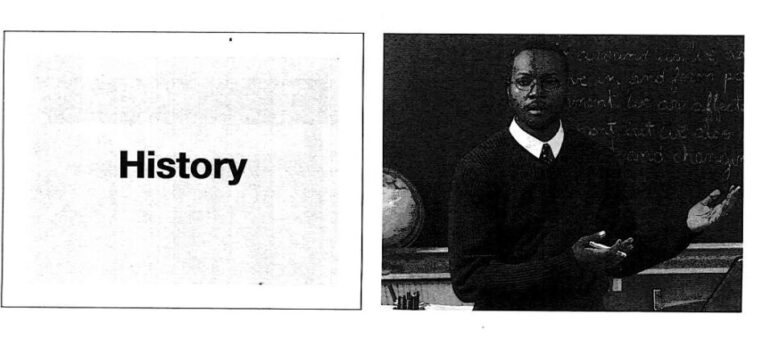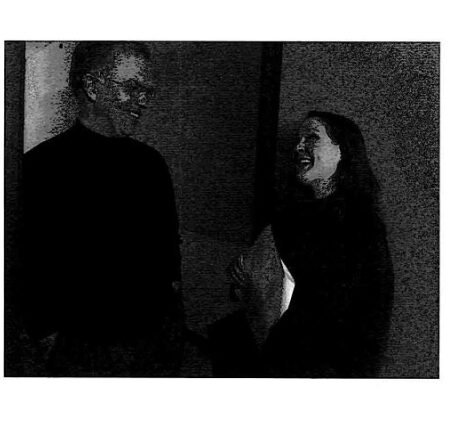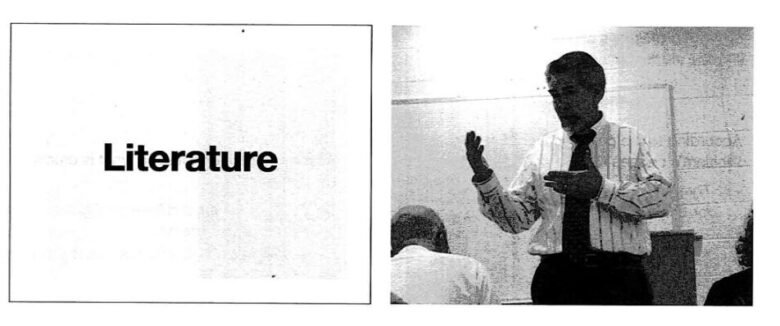TOEFL IBT Listening Practice Test 18 from TOEFL iBT ACTUAL TEST
Listening Section Directions
This test measures your ability to understand conversations and lectures in English.The Listening section is divided into 2 separately timed parts. In each part you will listen to 1 conversation and 2 lectures. You will hear each conversation or lecture only one time.
After each conversation or lecture, you will answer questions about it. The questions typically ask about the main idea and supporting details. Some questions ask about a speaker’s purpose or attitude. Answer the questions based on what is stated or implied by the speakers.
You may take notes while you listen. You may use your notes to help you answer the questions. Your notes will not be scored. If you need to change the volume while you listen, click on the Volume icon at the top of the screen.
In some questions, you will see this icon: This means you will hear, but not see, part of the question. Some of the questions have special directions. These directions appear in a gray box on the screen.
Most questions are worth 1 point. If a question is worth more than 1 point, it will have special directions that indicate how many points you can receive. You must answer each question. After you answer, click on Next. Then click on OK to confirm your answer and go on to the next question. After you click on OK, you cannot return to previous questions.
A clock at the top of the screen will show you how much time is remaining. The clock will not count down while you are listening. The clock will count down only while you are answering the questions.
TOEFL IBT Listening Practice Test 18 from TOEFL iBT ACTUAL TEST
https://www.youtube.com/watch?v=sdnIPTyImdE
Lecture 1 -6: Listen to part of a lecture in a history class
1. What is the lecture mainly about?
A. The major differences between national parks and national monuments in the U.S.
B. The Antiquities Act and why it is important to the preservation of the U.S.
C. The first national park. Yellowstone, and how its establishment came about
D. The Grand Canyon and Statue of Liberty and why they were made national monuments
2. What can be inferred about the creation of national monuments?
A The citizens of the U.S. can petition for their establishment.
B Congress will continue to maintain and fund them in later years.
C It happens much more quickly than the creation of national parks.
D The president has little control over when and how they are set up.
3. Listen again to part of the lecture. Then answer the question.
A. He wants the students to understand the protective vision of many U.S. presidents.
B. He believes that many presidents did not have the best interests of the country in mind.
C. He hopes that future presidential projects will not be taken advantage of like in the past.
D. He thinks the students should realize that many presidents protected land for their own benefit.
4. According to the professor, what was the first national monument in the United States?
A. The Grand Canyon
B. The Statue of Liberty
C. Devils Tower
D. Escalante
5. According to the professor, what did President Clinton do in relation to the Antiquities Act?
A. He broadened its appeal and realm of influence in the United States.
B. He established the Northwestern Hawaiian Islands Marine National Monument.
C. He used the act to establish a record number of national monuments.
D. He invoked the act to push his own agenda of conservation before he left office.
6. In the lecture, the professor discusses the establishment of U.S. national parks and national monuments. Indicate to which category each of the following statements belongs.
Click in the correct box for each sentence.
| National Parks | National Monuments | |
| A. They can take a long time to be established. | ||
| B. Congress has complete control over them. | ||
| C. Congress has little control over their creation. | ||
| D. The Antiquities Act establishes these. |
Conversation 7-11:0 Listen to part of a conversation between a student and a professor.
7.What are the speakers mainly discussing?
A The student’s attempt to sign up for the professor’s class
B The African-American writer Zora Neale Hurston
C . The student’s grades in some classes taken previously
D. The professor’s opinion on some classes the student may take
8. According to the professor, what are Dr. Whitlam’s classes like?
A. They are exciting yet sometimes too easy for the students.
B. They are full of energy yet can be difficult for the students.
C. They are animated and full of diaiog between the students and professor.
D. They are unpopular because he is too overbearing during the class.
9. What does the professor imply about Professor Rice?
A She is an expert in various eastern religions.
B She just became the head of her department.
C She does not specialize in religions such as Buddhism.
D She is not one of the more popular professors in the department.
10. Listen again to part of the conversation. Then answer the question.
A To indicate that the registration policy benefits upperclassmen
B To declare that the class is only popular with juniors and seniors
C To mention that the case will be difficult for freshmen and sophomores
D . To encourage the professor to change the registration method
11. According to the professor, what is crucial to a folklore class?
A. An exploration of different religious influences on the wnters
B. A well-structured syllabus that the students can follow
C. Readings of one of its major contributors Zora Neaie Hurston
D. Other modem examples of literature coming from the South
Lecture 12-17: Listen to part of a lecture in a literature class.
12. What aspect of Poe’s short story does the professor discuss?
A. Some major themes such as death and revenge
B. How the setting is important to the plot
C. A comparison of the two main characters
D. How symbolism plays a major role in the story’s development
13. Listen again to part of the lecture. Then answer the question.
CD H
e believes the students are aware of the meaning of catacombs.
CD He wishes he could challenge the students better in class.
CD He wonders whether or not he could have explained it better.
CD He thinks the students are not entirely following his lecture.
14. According to the professor, what is the main difference between Fortunato and Montresor?
A. Fortunato has much more wealth than Montresor.
B. They attained their societal status in dissimilar ways.
C. Montresor is much wiser than the foolish Fortunato.
D. Montresor is an executioner while Fortunato is a dupe.
15. According to the professor, how did Fortunato gain his wealth?
A He inherited it from some of his rich ancestors.
B He usurped it from some naive investors.
C He acquired a lot of money through an accident.
D He built an empire through a lot of hard work.
16. What can be inferred from Montresor because of his mask?
A. He is of a higher status than Fortunato.
B. He does not want to reveal who he is.
C. He is planning on killing Fortunato.
D. He is a thief preparing to rob Fortunato.
17. In the lecture, the professor discusses the characteristics of Fortunato and Montresor. Indicate which character the following statements characterize.
Click in the correct box for each sentence.
| Fortunato | Montresor | |
| A His costume bells jingle when he speaks. | ||
| B He is a member of the nobility. | ||
| C, His ancestors are buried in the catacombs. | ||
| D. He is a member of the nouveau riche. |




